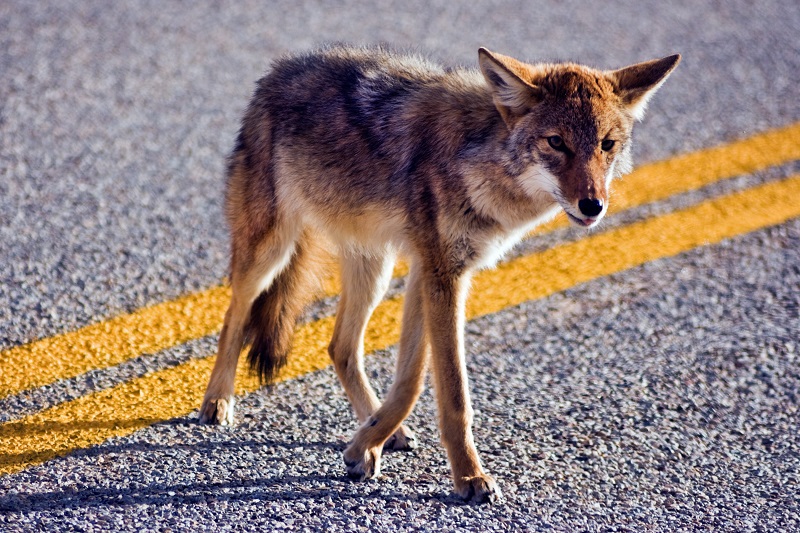Last Saturday morning, a jogger in Central Park stumbled upon an unusual sight: a large, wild coyote leisurely prowling through the 72nd Street Traverse. As video footage captured the majestic animal going about its business, locals found themselves puzzled by its presence in the heart of Manhattan. How did it get there, and what was it doing?

Uncommon Yet Resourceful Creatures
While encountering a coyote in Manhattan might seem surprising, it’s not entirely unheard of. Coyotes are remarkably adaptable animals known for their ability to thrive in diverse environments. They navigate urban landscapes with ease, crossing highways and bridges, and establishing habitats throughout the five boroughs. Despite their urban residency, the presence of a coyote in Central Park might raise questions about its intentions and safety.
Tips for Coexisting with Coyotes
In response to the sighting, the NYC Parks and Recreation Department offered valuable advice on how to interact with coyotes in urban settings. Here are some essential tips to consider:
- Observe from a distance: The first rule of encountering wildlife is to maintain a safe distance. Avoid approaching or attempting to interact with the coyote to minimize potential risks.
- Do not feed them: Feeding coyotes can habituate them to human presence, potentially leading to bolder behavior and increased encounters. Properly dispose of food and garbage to avoid inadvertently attracting coyotes.
- Protect your pets: Small pets, such as cats and small dogs, may be perceived as prey by coyotes. Larger dogs could be viewed as competition. Keep your pets on a leash and avoid allowing them to interact with coyotes to prevent confrontations.
- Assert dominance if approached: If a coyote approaches you, assert dominance by making yourself appear larger, raising your arms, and making loud noises. This behavior can help deter the coyote and encourage it to retreat.
Adapting to Urban Life
Coyotes have been a part of New York City’s ecosystem since the 1930s, gradually expanding their range from the Great Plains and the Southwest to urban areas like Manhattan. While they are not native to the city, coyotes have demonstrated remarkable resilience and adaptability, making them a fixture in boroughs like Queens, the Bronx, and now Manhattan. Despite their urban exploits, coyotes typically maintain relatively small territories, preferring consistency in their habitats unless compelled to relocate by changing circumstances.

Encountering a coyote in Central Park serves as a reminder of the dynamic interactions between wildlife and urban environments. By understanding and respecting these animals’ behaviors and habitats, New Yorkers can coexist peacefully with their wild neighbors while ensuring the safety of both humans and wildlife alike.
